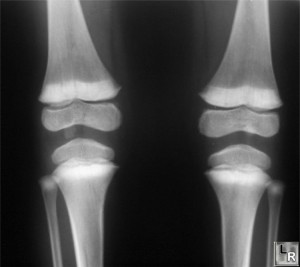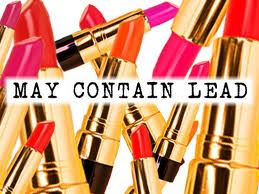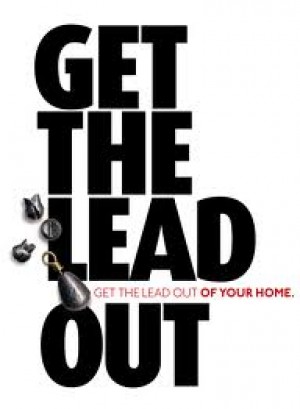 |
||||||
| LEAD Action News Volume
13 Number 2, April 2013, ISSN 1324-6011 Incorporating Lead Aware Times ( ISSN 1440-4966) and Lead Advisory Service News (ISSN 1440-0561) The Journal of The LEAD (Lead Education and Abatement Design) Group Inc. Editorial Team: Elizabeth O’Brien, Zac Gethin-Damon, Hitesh Lohani and Shristi Lohani |
||||||
|
About Us
|
The Hour of Lead By Deborah Blum [at: http://blogs.plos.org/speakeasyscience/2010/09/27/the-hour-of-lead/ - reprinted with kind permission of Deborah Blum, a Pulitzer-prize winning science writer and a professor of journalism at the University of Wisconsin.] This
is the Hour of Lead- When 19th century poet Emily
Dickinson wrote those lines, she was describing the terrible paralysis of grief.
A good century later, analysts for the Environmental Defense Fund, would also
note that the last line “aptly describes some of the symptoms of lead
intoxication.” I’ve always suspected that they also just liked the poem and wanted to use it – certainly that’s partly my motive here. But I’ve also been thinking about one phrase in Dickinson’s verse because it seems to me, recently, that as a human society we seemed perpetually caught – by which I mean poisoned – in an endless” hour of lead.” The chemical symbol for lead is Pb, from the Latin word “plumbum” which referred to a malleable metal. The term plumbing comes from the use of lead pipes by the Romans; a plumber fixes them, a plumb bob refers to a lead weight, a plumb line is pulled straight by such a weight. An old-fashioned term for lead poisoning is plumbism. We are surrounded by references to what is arguably the most important poison in human history. Many scholars have argued, for instance, that the plumbum-loving Roman empire – enthusiastically using lead pipes, bottles, and wine cups, leaded cosmetics and paint – came to its end partly due to lead-poisoning of its upper classes. One U.S. Environmental Protection Agency paper on the history of lead poisoning, cites “the conspicuous pattern of mental incompetence that came to be synonymous with the Roman elite” as evidence of lead’s destructive effects. Interestingly, the EPA paper also cites poetry to illustrate the evils of lead poisoning, a scrap of anonymous verse, attributed to a Roman hermit and translated in 1829: The feeble offspring curse their crazy sires, And, tainted from his birth, the youth expires.
It deposits itself into bones and stays there – the half-life of lead in human bones is up to 30 years. Muscle weakness, numbness and tingling, nausea, severe stomach pain, depression, fatigue, sleeplessness, loss of libido – all are symptoms of lead poisoning and all speak to its ability to impact every part of the body. The Romans weren’t the only major civilization from our past to be affected by lead poisoning. This summer, environmental scientists in Japan reported the results of an investigation into lead exposure in the Edo period, which lasted from 1603 to 1867, a time when the country was dominated by shogun leaders, and laws enforced by an aristocratic class of samurai warriors. According to Tamiji Nakashima, an anatomist at the University of Occupational and Environmental Health in Kitakyushu, the investigators studied the remains of samurai men, their wives and children, about 70 in total. Earlier tests had found unusually high levels in the women compared to men; the last study looked at the children. The researchers tested for lead in rib bones, x-rayed the childrens’ arm and leg bones looking for signs of lead poisoning.
Nakashima and his colleagues believe that the children were poisoned by touch, as they were fed, hugged, carried by their mothers, the lead-rich paint rubbed off on them. They also speculate that the gradual lead-poisoning – with its inevitable taint of death and disability – helped put an end to the shogunate reign in the late 19th century, setting up the transfer of power to an emperor. It has only been in the last century, of course, that we’ve realized just how dangerous lead actually is. That knowledge has resulted from the new ability of scientists to detect it in very tiny amounts and to connect those trace exposures with health problems. In the dawn of lead awareness, governments have banned lead paint and leaded gasoline, moved to replace lead pipes in water systems, squeezed down allowable lead levels in consumer products. Is this a smart response? Yes, obviously, if we are talking about poison unsafe at all levels. But only if said governments are actively – and honestly – trying to enforcement protective standards. For instance, as reported this spring by The Washington Post, when inspections discovered massive lead contamination from pipes in Washington D.C. in 2004, the Bush administration not only issued misleading reassurances but moved to loosen protective measures designed to protect against lead poisoning.
Finally, just today a coalition of five environmental groups filed a petition with the EPA, trying to force the agency to regulate the use of lead shot in hunting, which advocates say is now killing more than 10 million birds and animals every year, mostly due to consumption of spent lead pellets. contaminated by lead. “It’s long past time do something about this deadly – and preventable – epidemic of lead poisoning in the wild,” said Jeff Miller, conservation advocate for the Center for Biological Diversity. The government does ban the use of lead pellets in shooting waterfowl but conservationists say this barely touches the problem. Still, the EPA has been notably reluctant to take an this issue angrily opposed by hunting groups, who are already describing the petition as an attack on traditional hunting values.
This year, the real lead horror story has come from Nigeria, where health experts now believe that some 18,000 people have been poisoned – and more than 200 children have died – as a result of lead exposure related to gold mining. The Chinese smelters were working with manganese ore, the Nigerians were not seeking to find lead, but many ores, as we know to our cost, are far from pure. The eternal hour of lead, as I see it, is created by our decisions – we began by using lead before we understood its risks (or really had full ability to) and we’ve kept it close at hand ever since – accidentally, carelessly, stubbornly. But to misquote Emily Dickson, perhaps we’ve not yet finished our lead stupor, perhaps eventually we’ll reach the point where we can let it go. |
|||||
|
About
Us |
bell
system lead poisoning |
Contact Us
| Council
LEAD Project | egroups | Library
- Fact Sheets | Home
Page | Media Releases |
||||||
|
Last
Updated 07 May 2013
Copyright © The LEAD Group Inc. 1991- 2013 PO Box 161 Summer Hill NSW 2130 Australia Phone: +61 2 9716 0014 |
||||||



 The
Japanese scientists had already concluded that the lead levels in women were
directly related to the white face paint popular in aristocratic circles, which
turned out to be loaded with lead. They wondered if exposure to the same
material might have harmed the children and the new results showed them
precisely right; they found evidence of lead levels more than 120 times
background level as well as bands of lead deposits in the bones.
The
Japanese scientists had already concluded that the lead levels in women were
directly related to the white face paint popular in aristocratic circles, which
turned out to be loaded with lead. They wondered if exposure to the same
material might have harmed the children and the new results showed them
precisely right; they found evidence of lead levels more than 120 times
background level as well as bands of lead deposits in the bones. Or
consider last year’s discovery of lead in popular lipstick brands sold in the
United States. Although some of these products showed clear lead contamination
in amounts above EPA safety levels – and although women inevitably swallow
some lipstick – the U.S. Food and Drug Administration declared that the
lipsticks were perfectly safe. And, in fact, they may pose no serious
risk. But the FDA has also refused to release the full details of its study and
the result has been an exasperated consumer movement, The Campaign for Safe
Cosmetics.
Or
consider last year’s discovery of lead in popular lipstick brands sold in the
United States. Although some of these products showed clear lead contamination
in amounts above EPA safety levels – and although women inevitably swallow
some lipstick – the U.S. Food and Drug Administration declared that the
lipsticks were perfectly safe. And, in fact, they may pose no serious
risk. But the FDA has also refused to release the full details of its study and
the result has been an exasperated consumer movement, The Campaign for Safe
Cosmetics. This
is not to suggest that lead problems – or even the worst lead problems – are
concentrated in the United States. Last year, more than 1,300 children were
sickened in China by lead exposure from nearby smelting plants, leading to
furious protests from their parents against government cover-ups.
This
is not to suggest that lead problems – or even the worst lead problems – are
concentrated in the United States. Last year, more than 1,300 children were
sickened in China by lead exposure from nearby smelting plants, leading to
furious protests from their parents against government cover-ups.